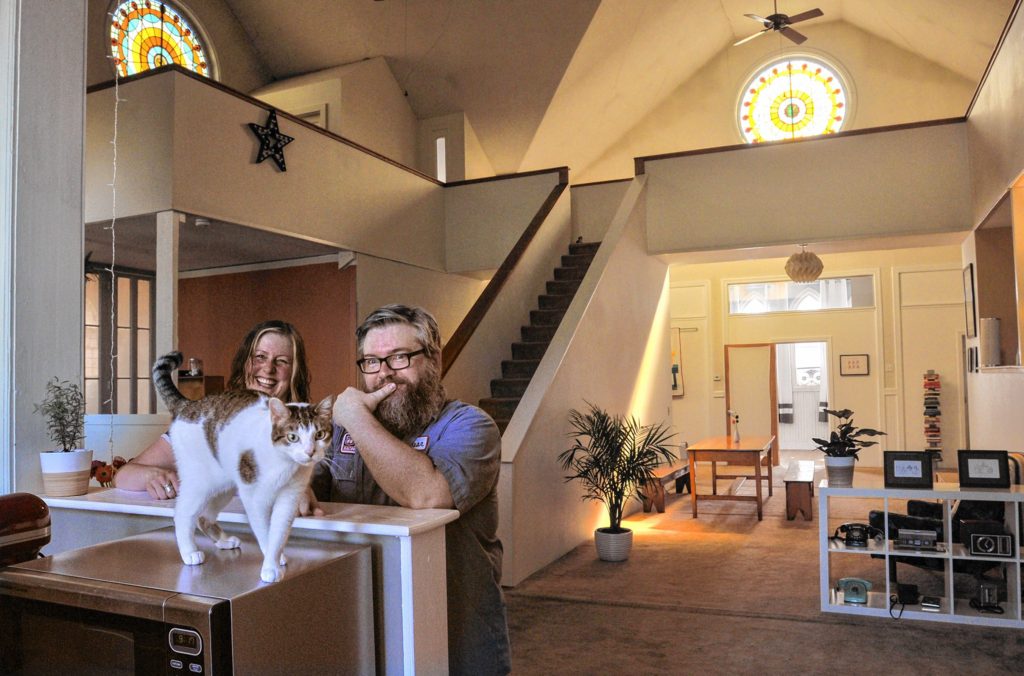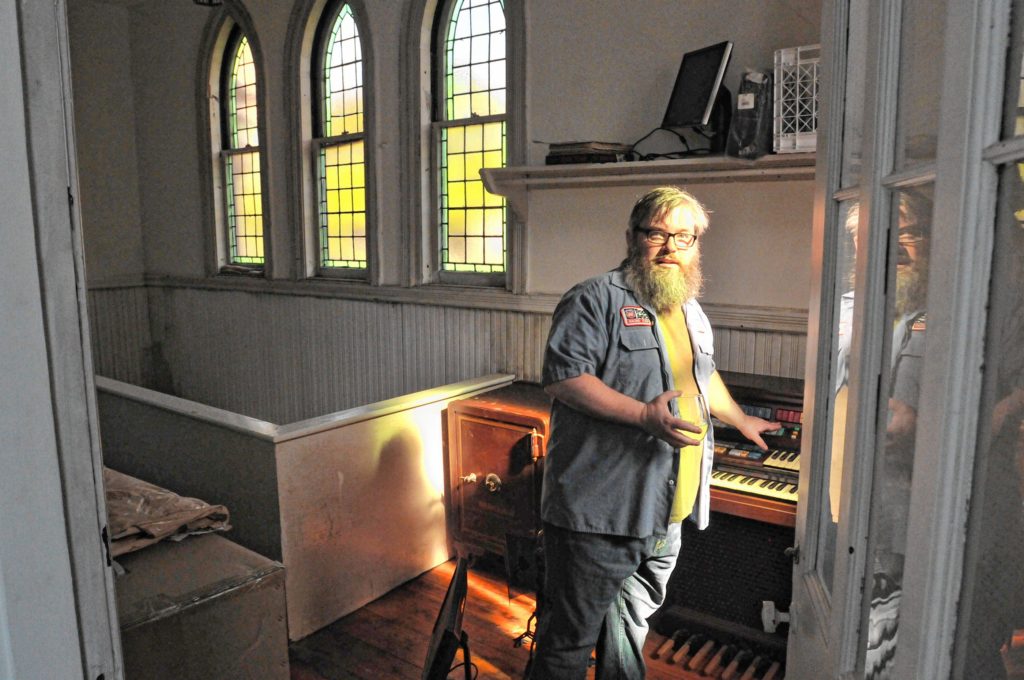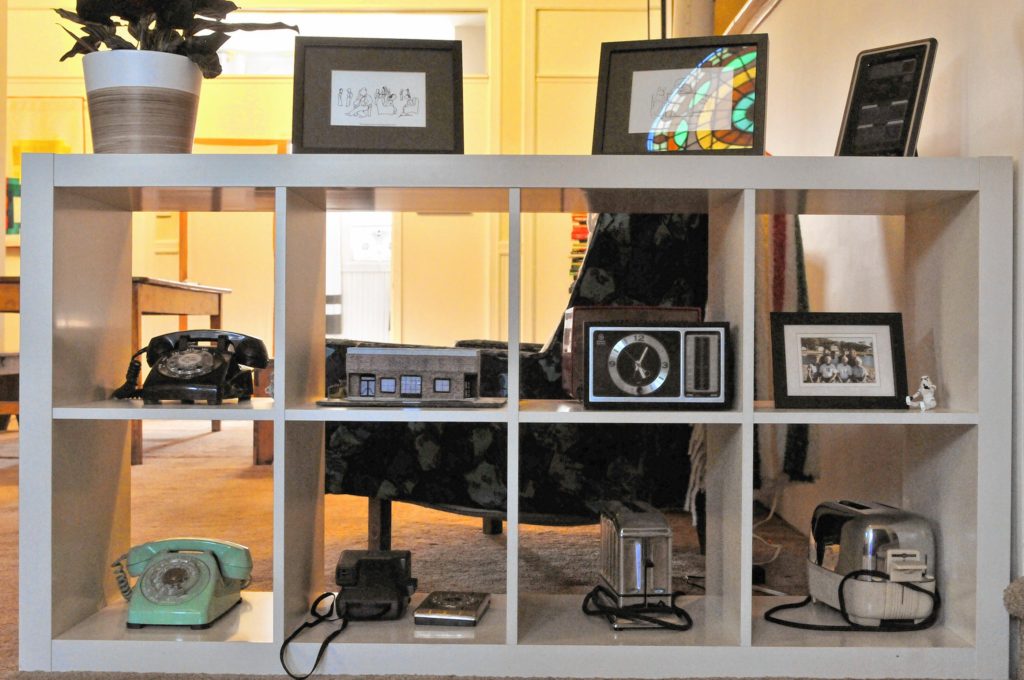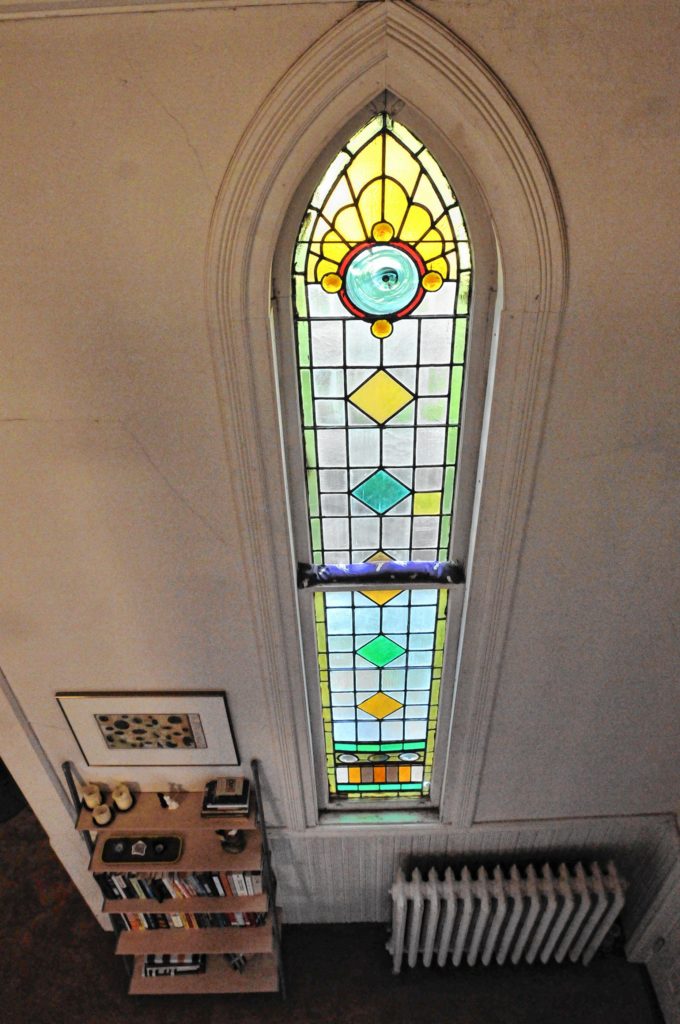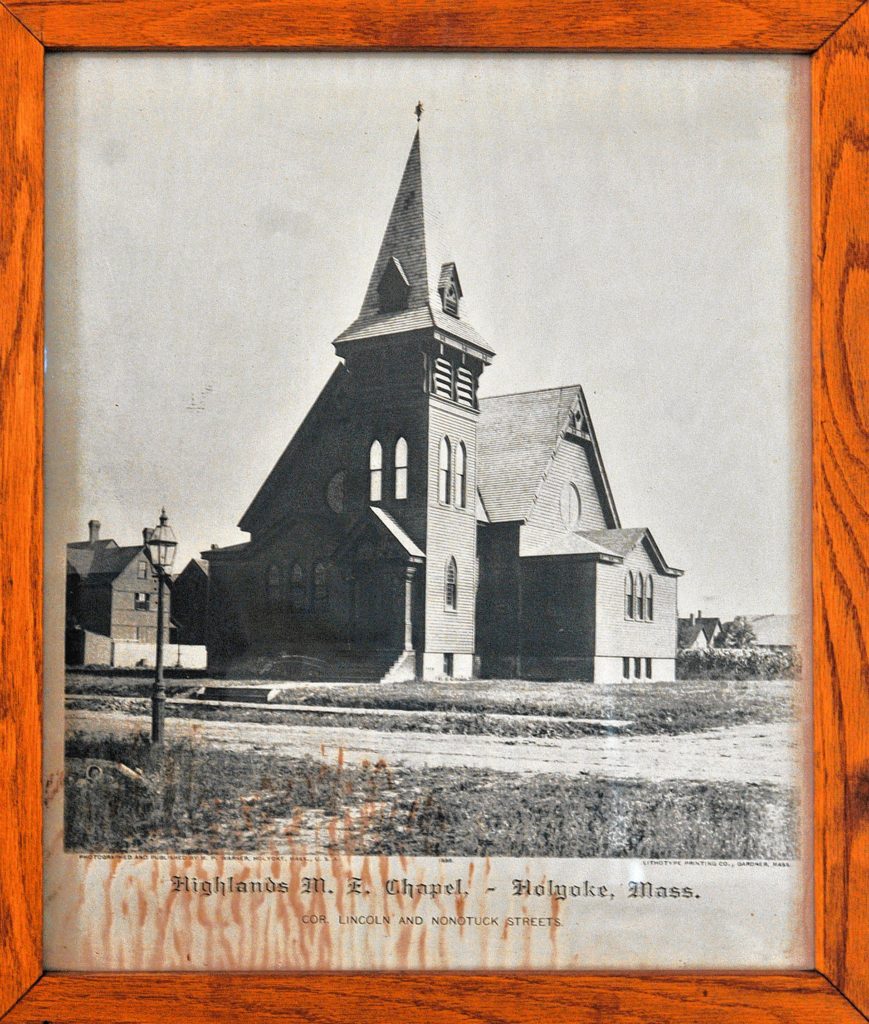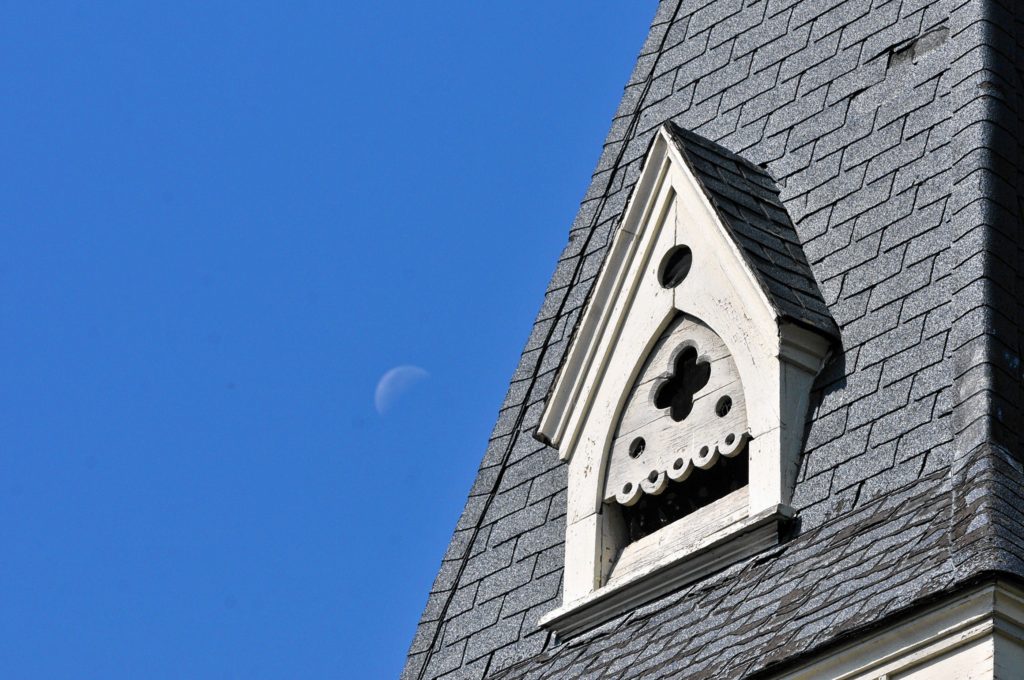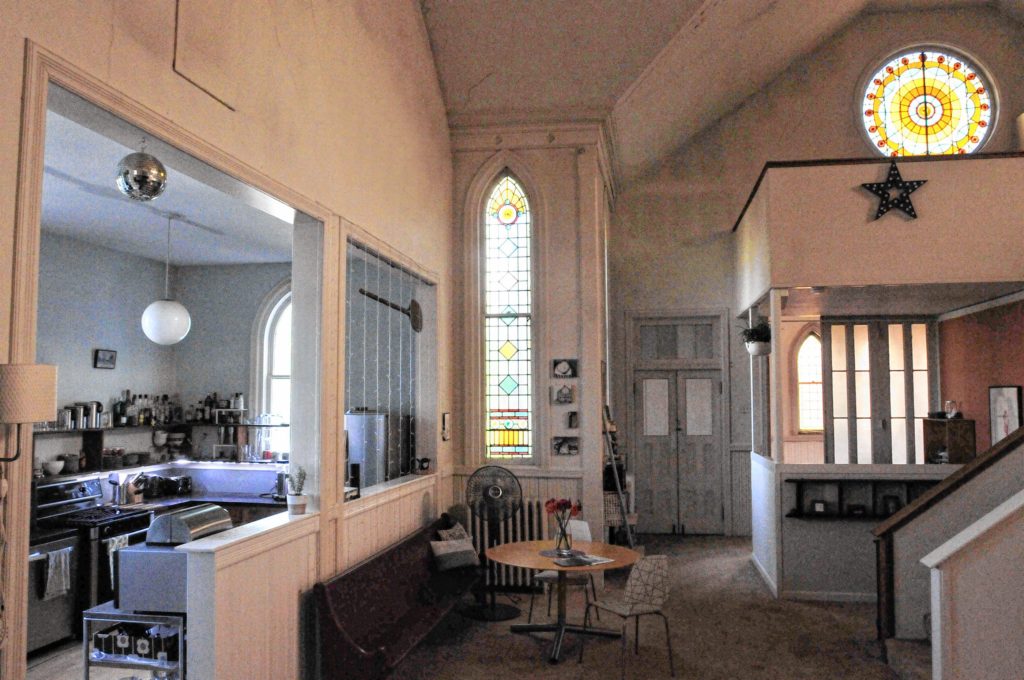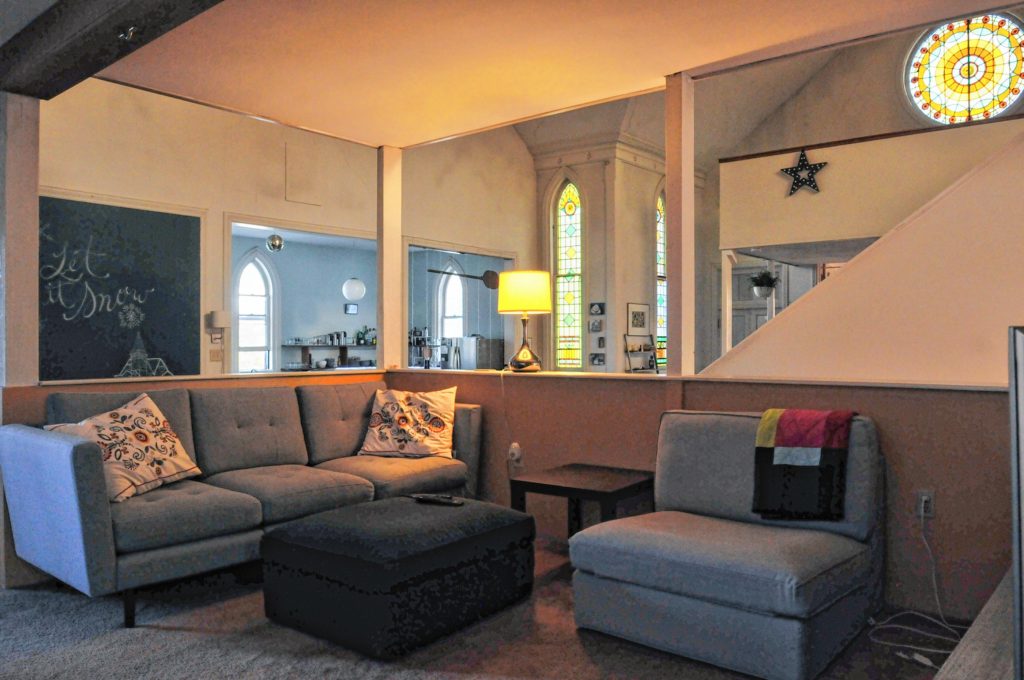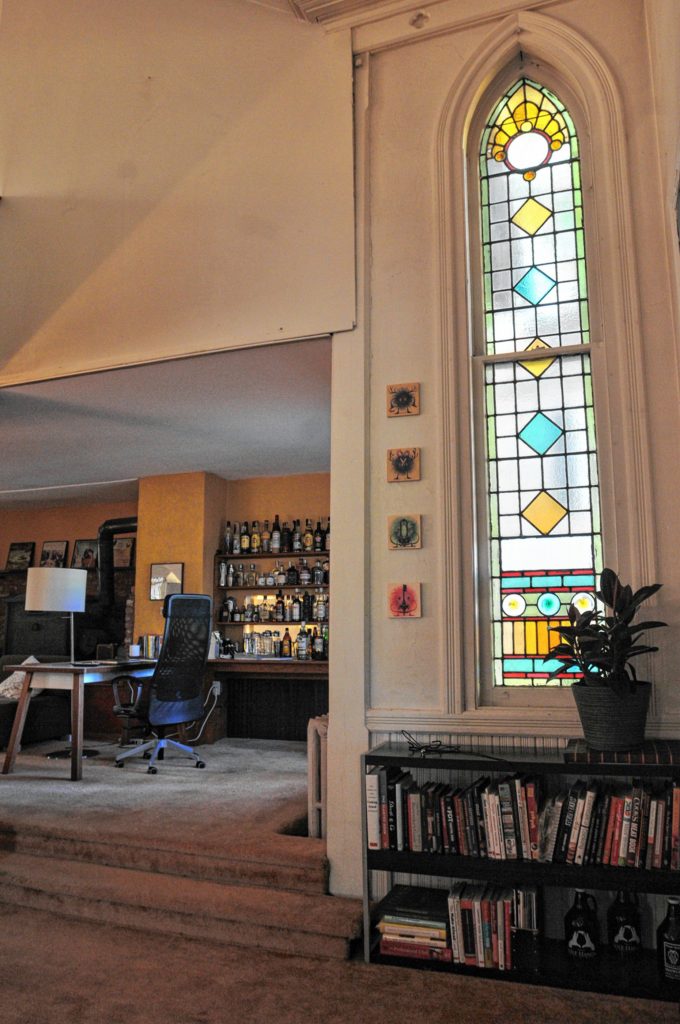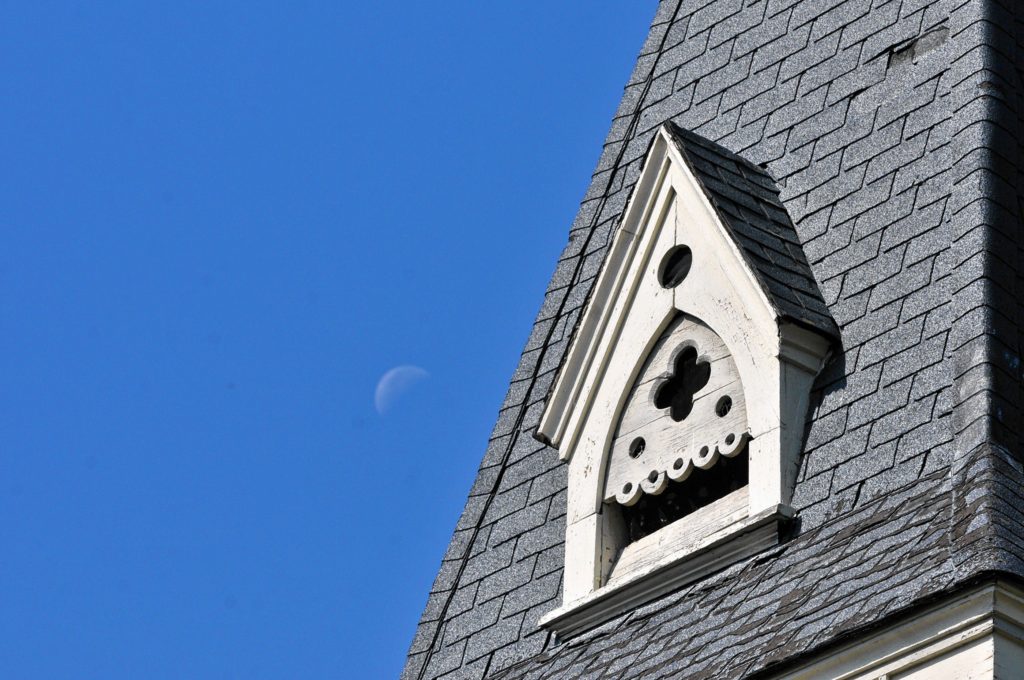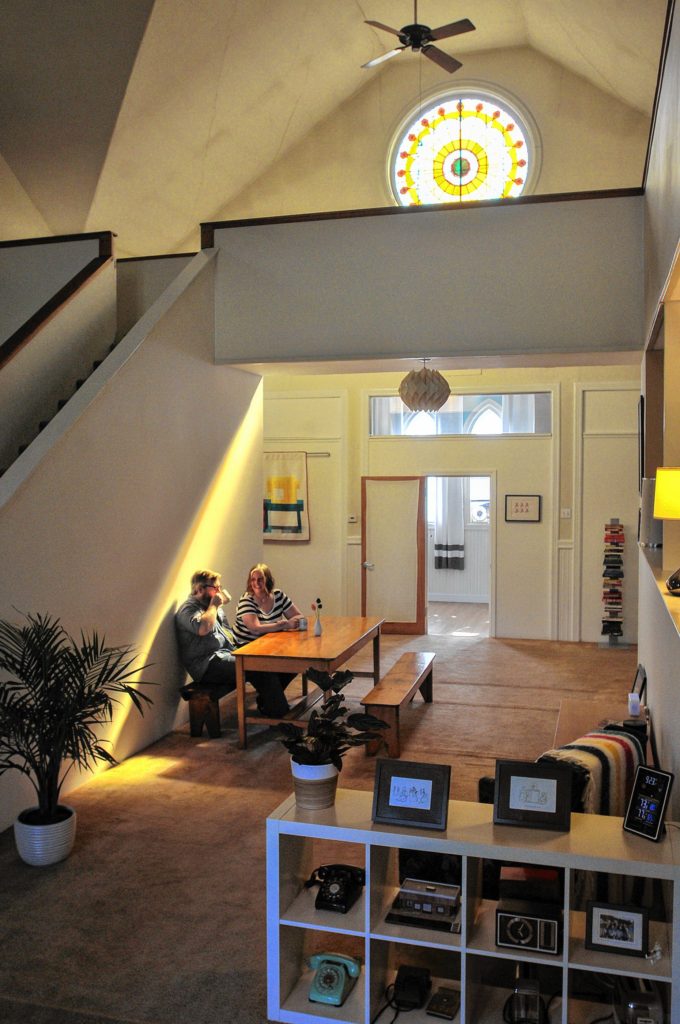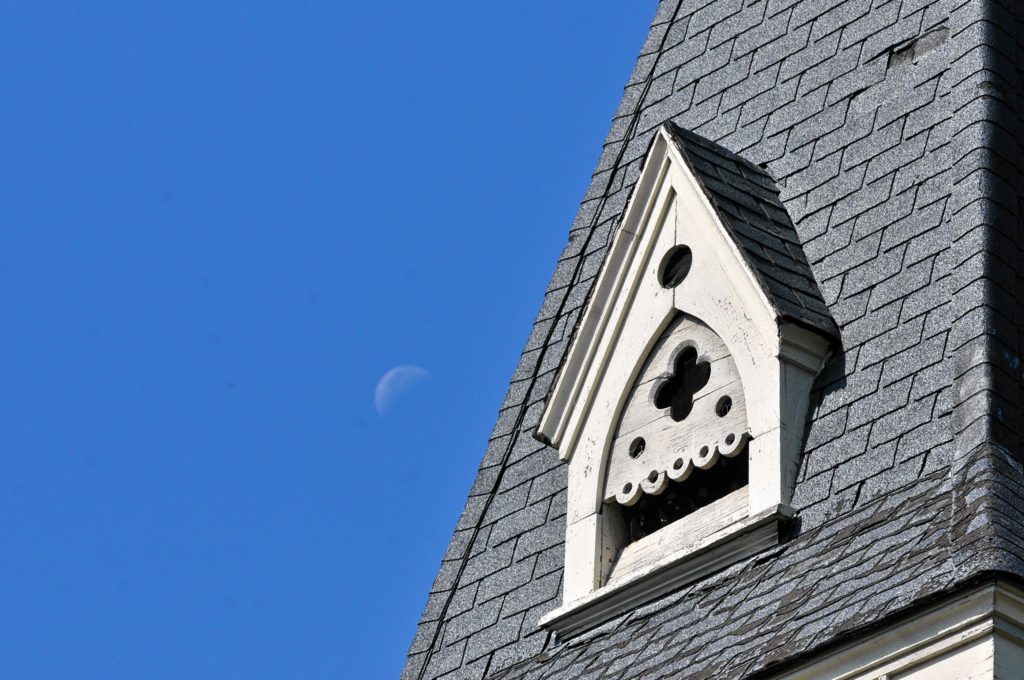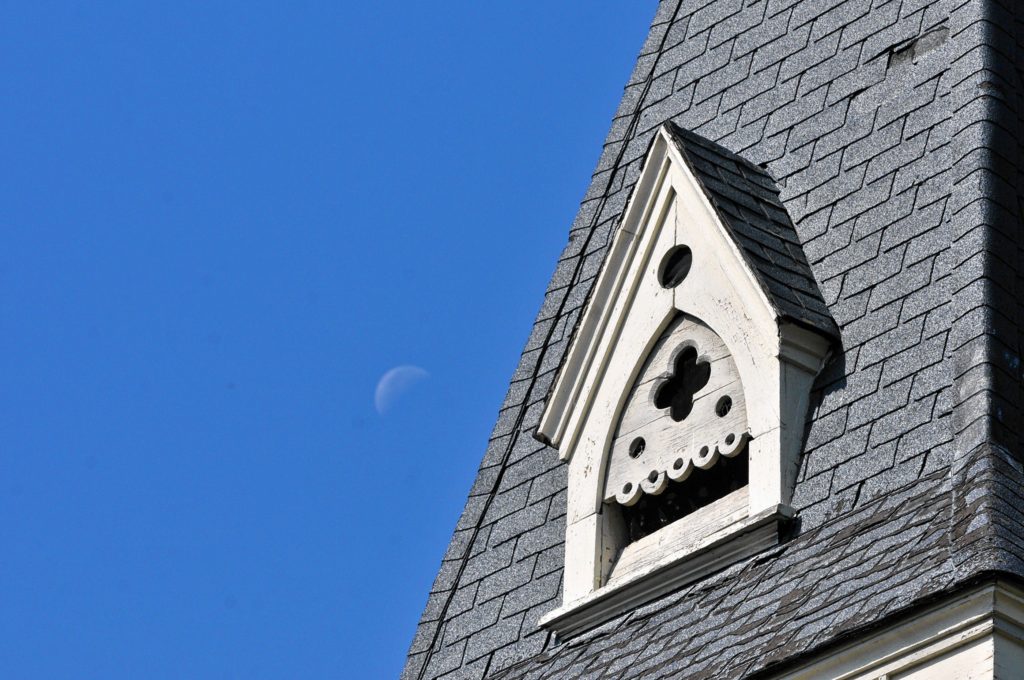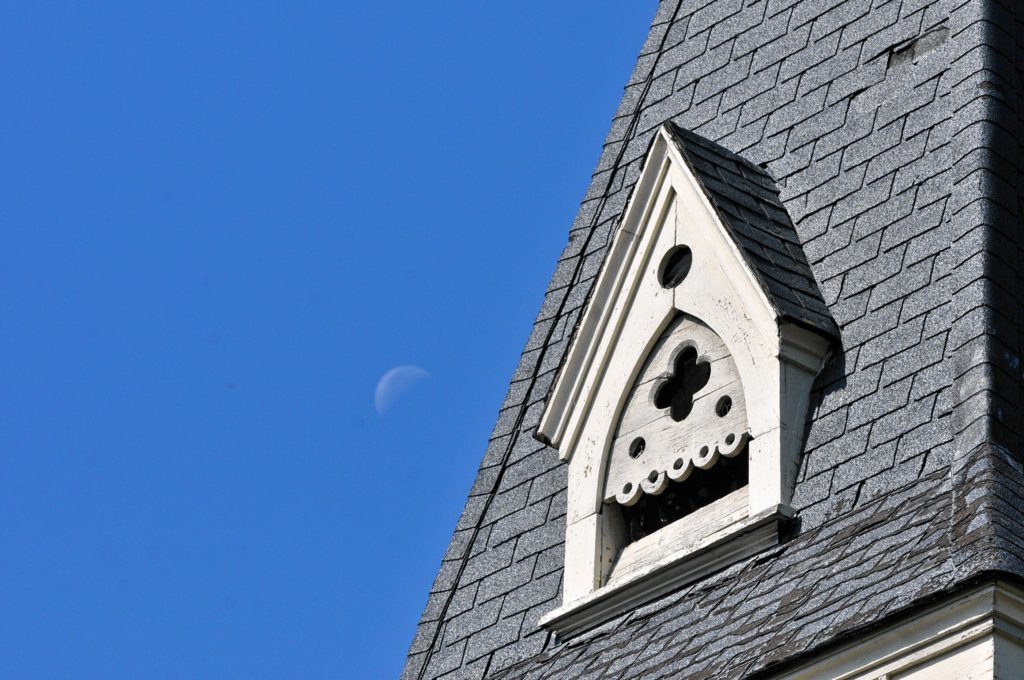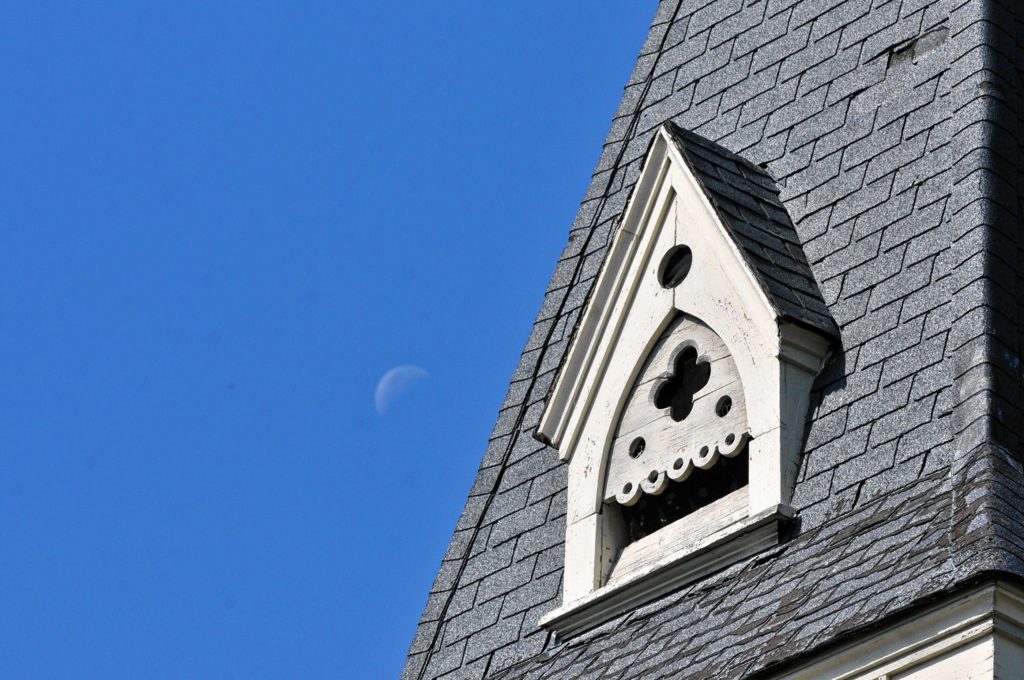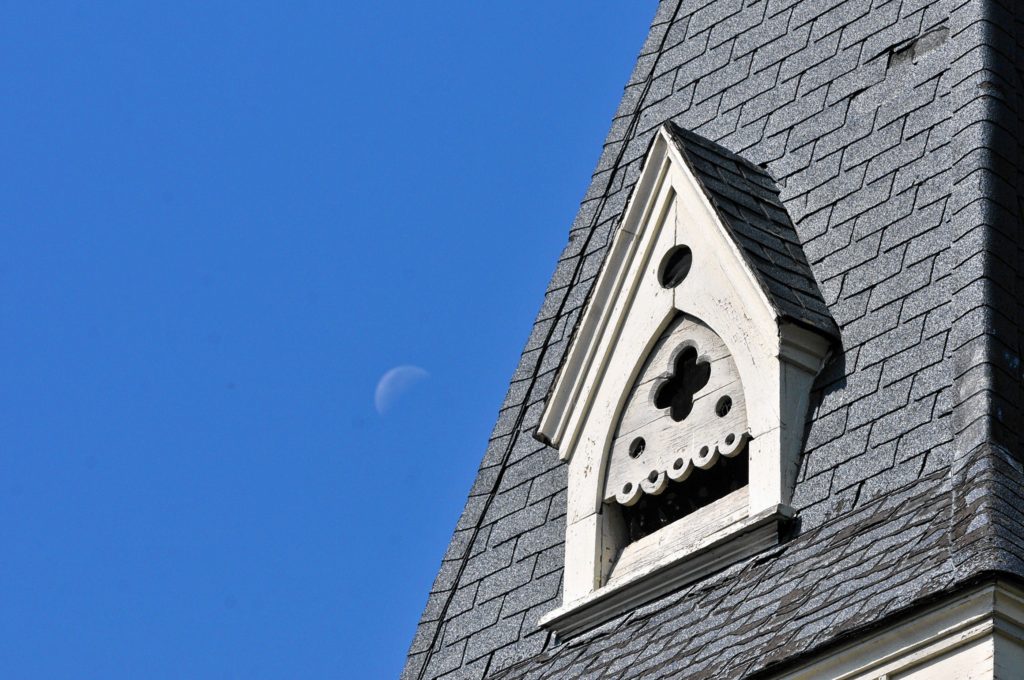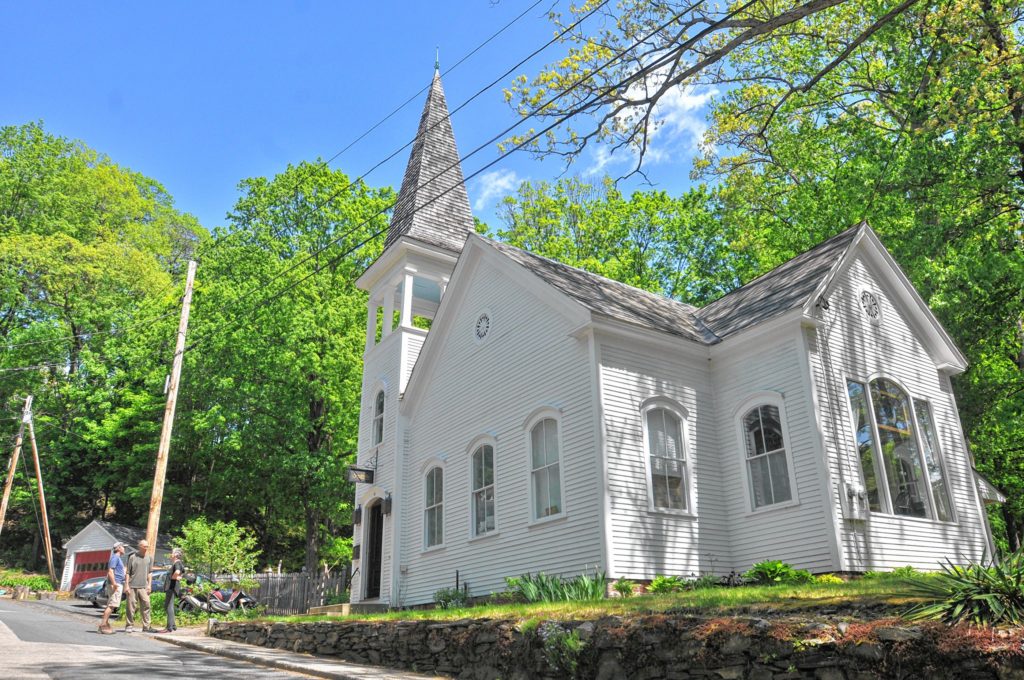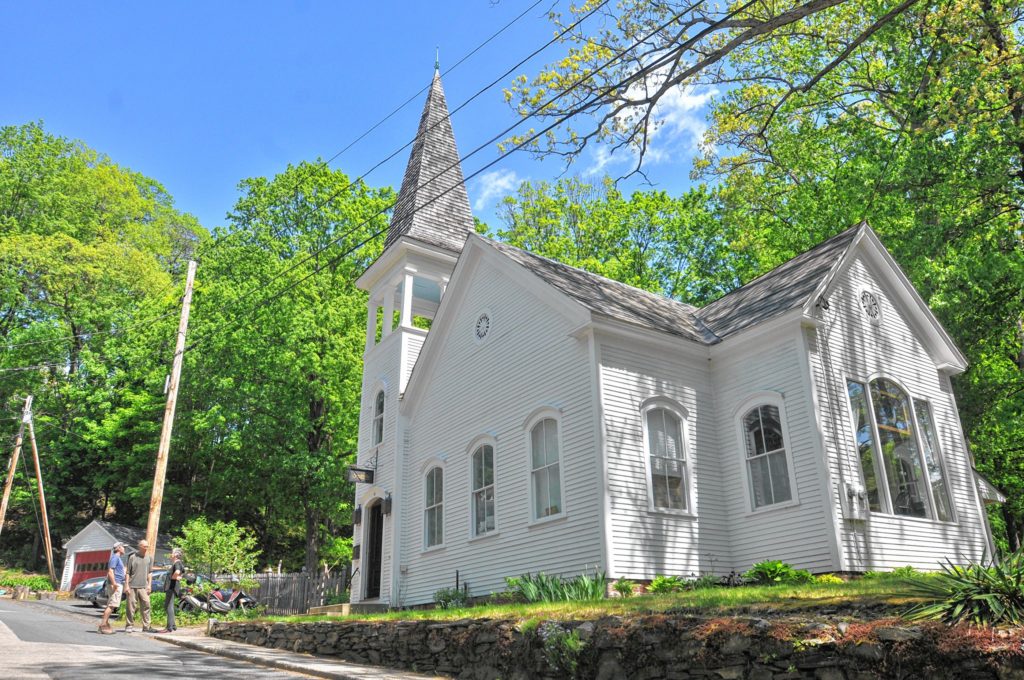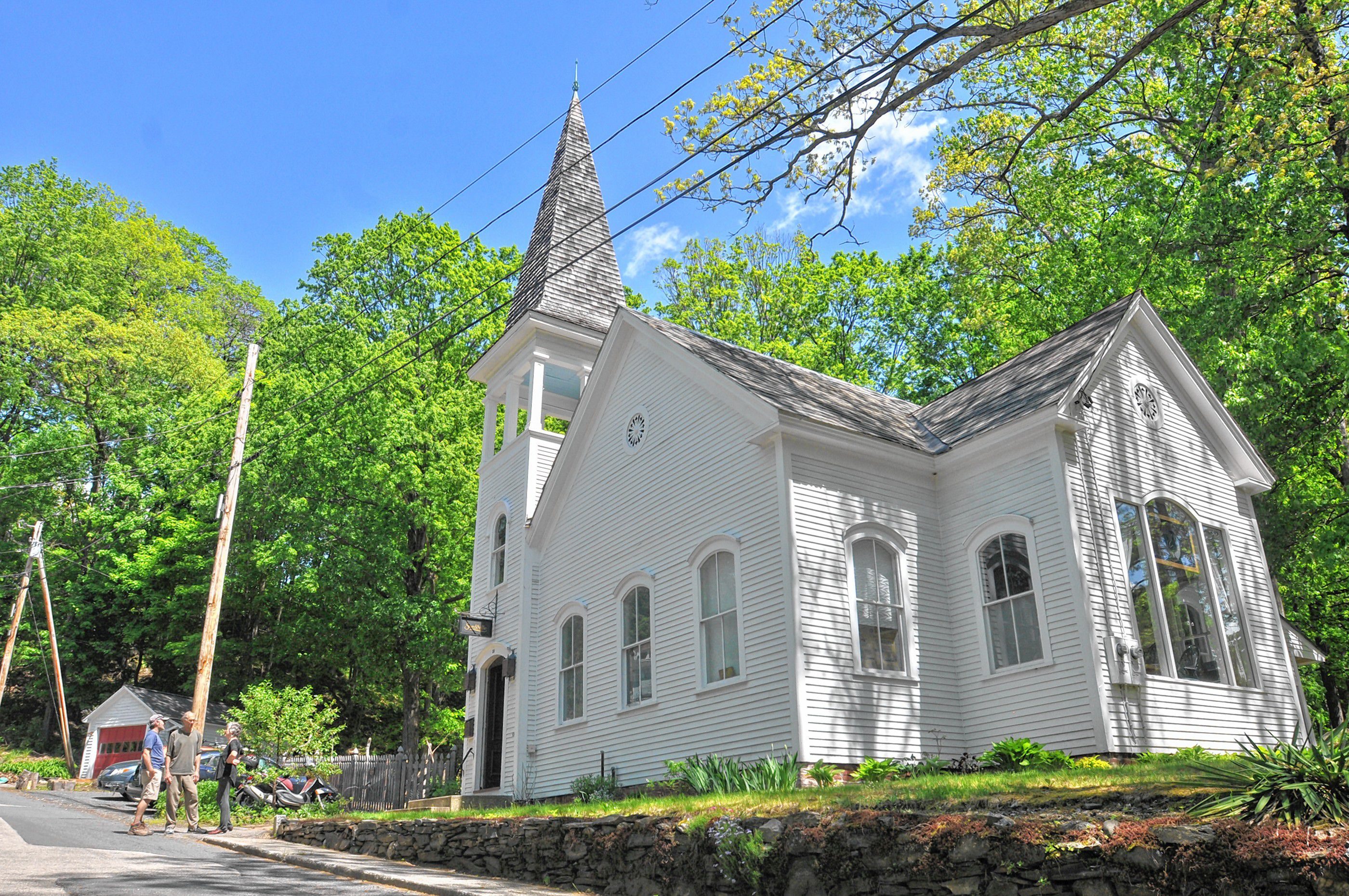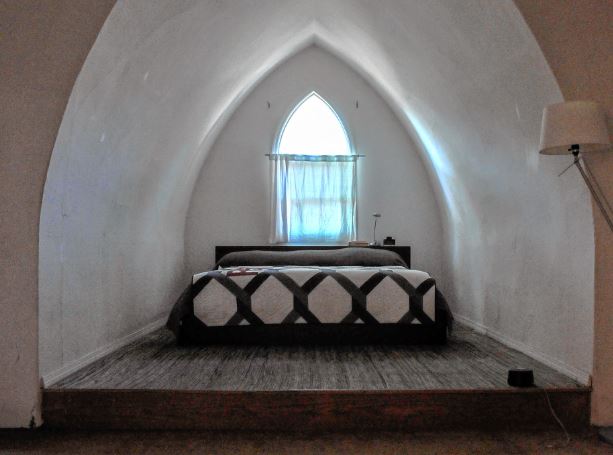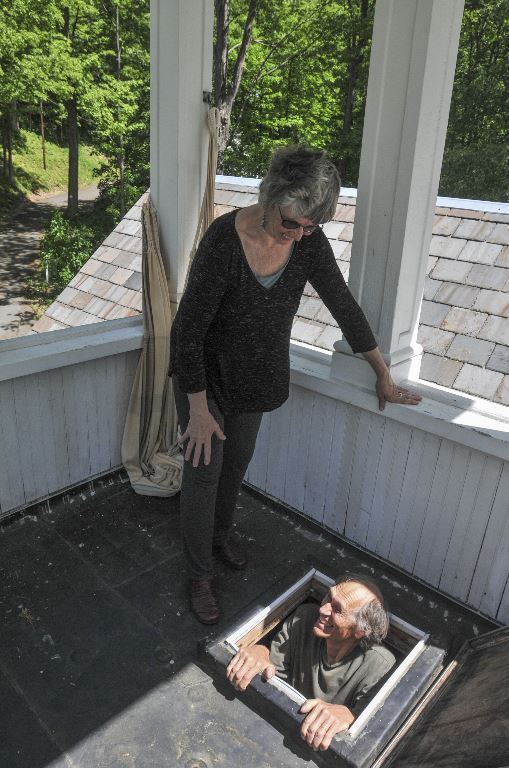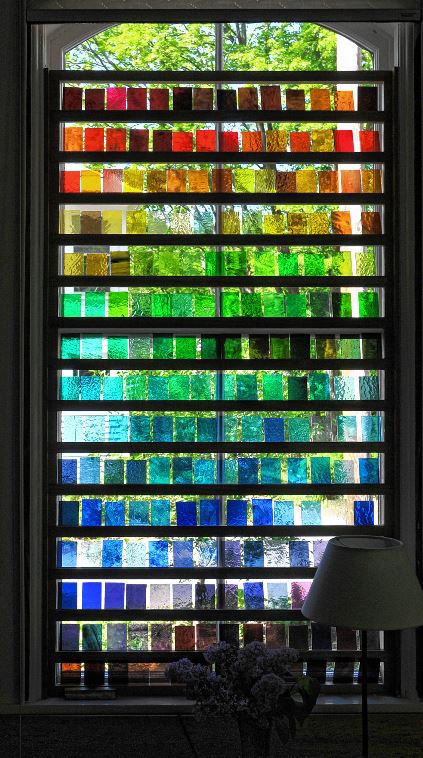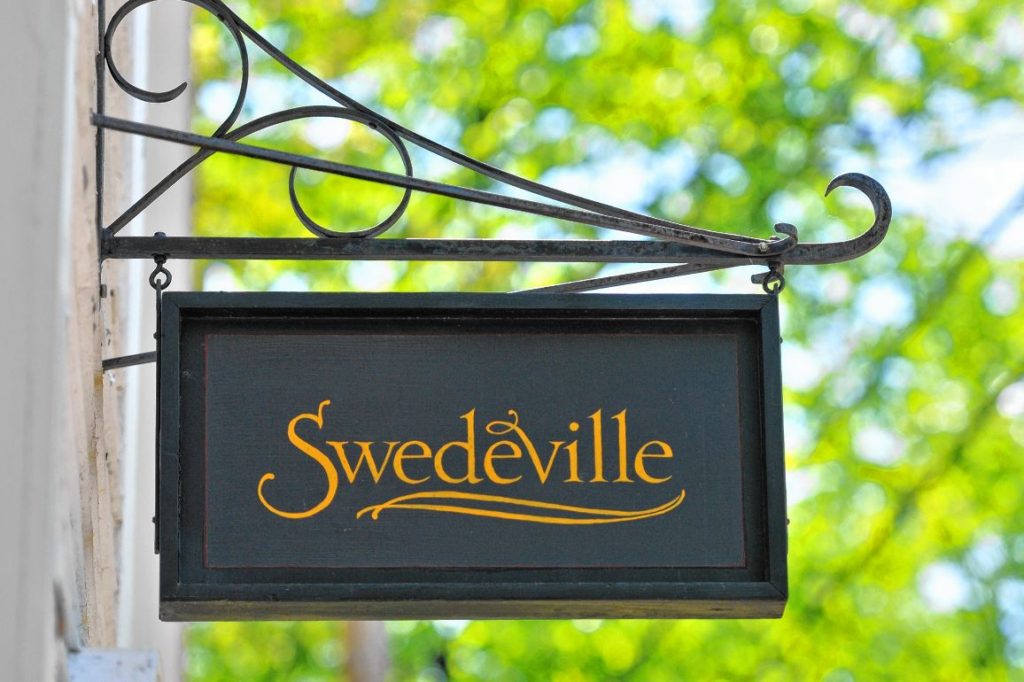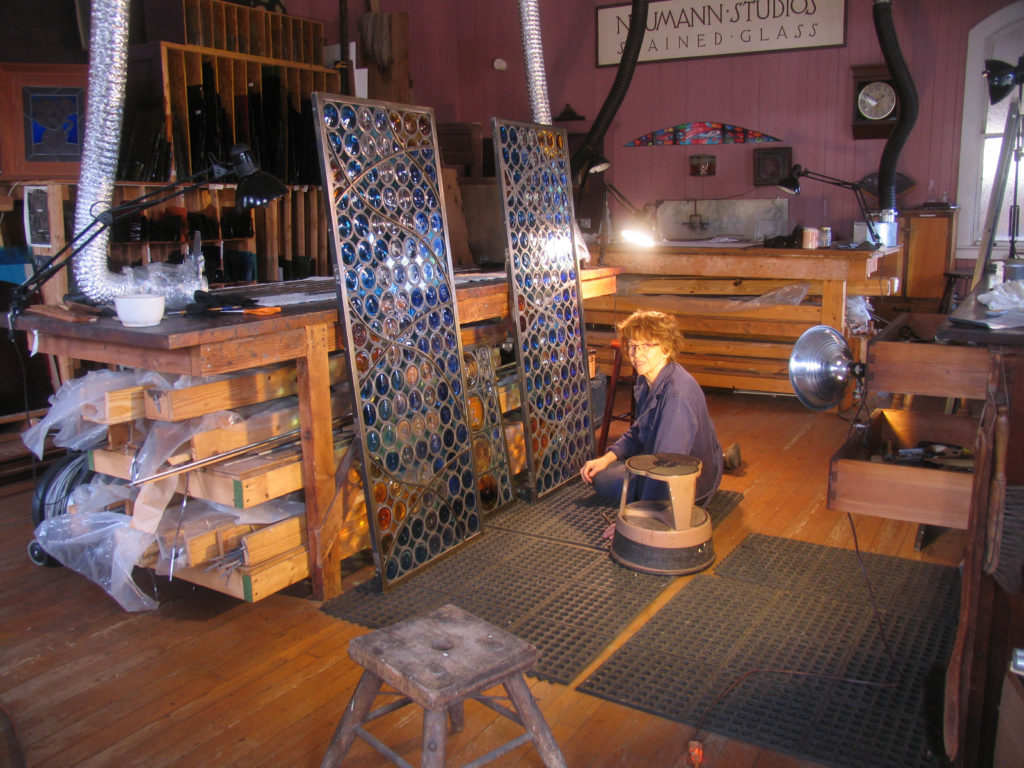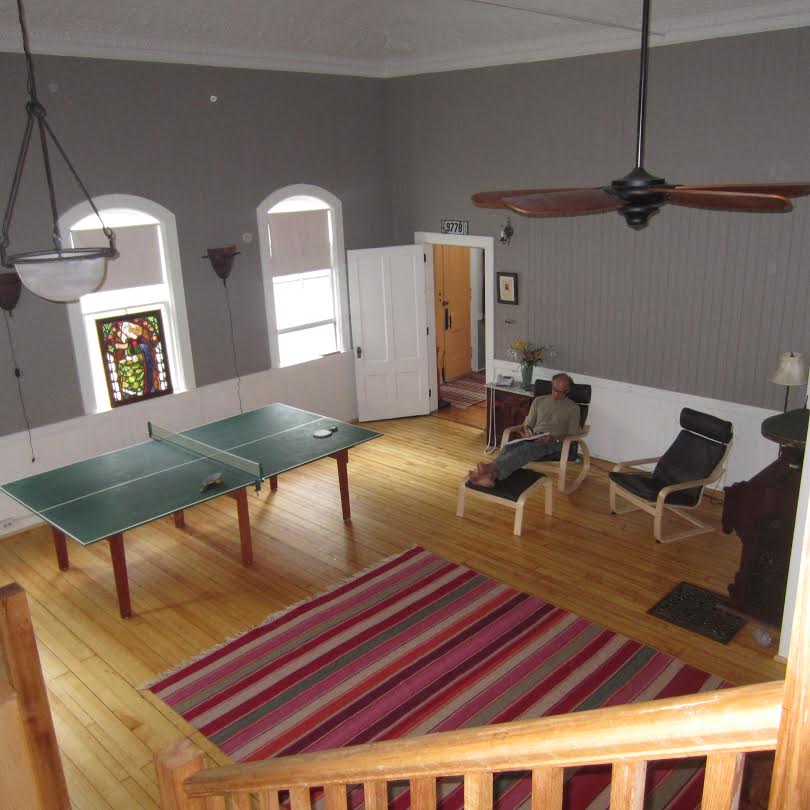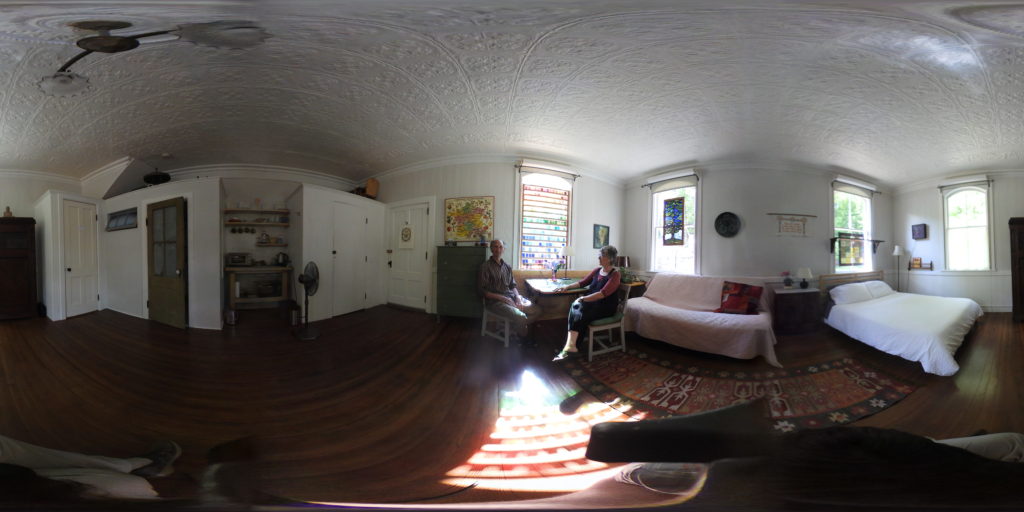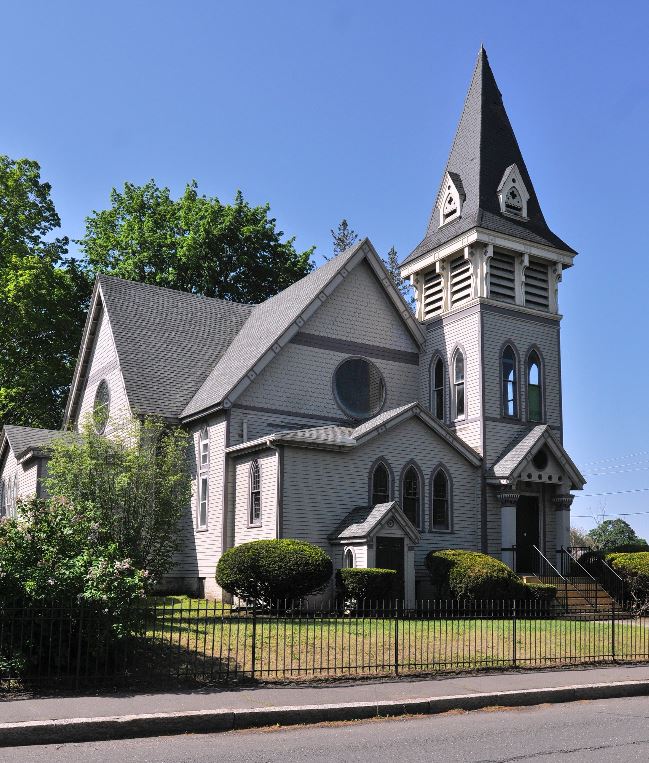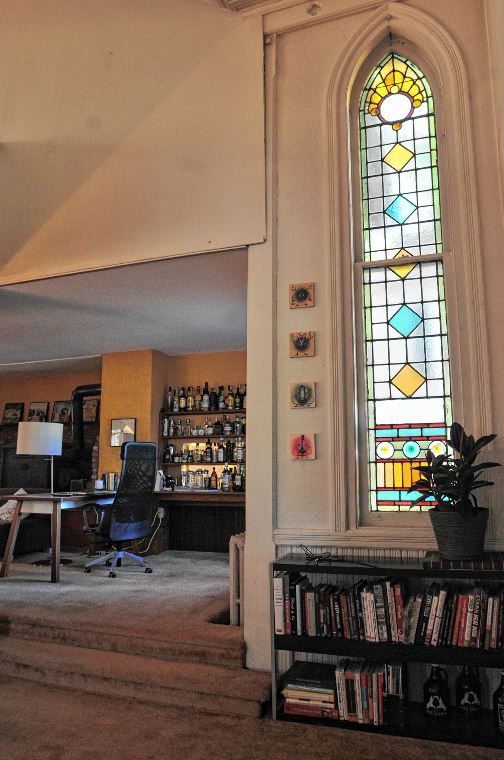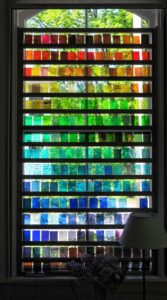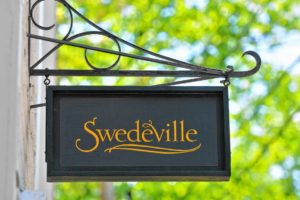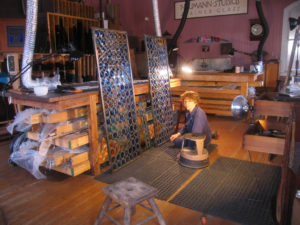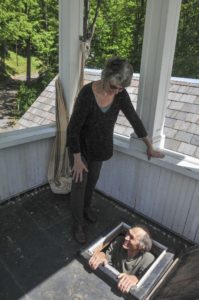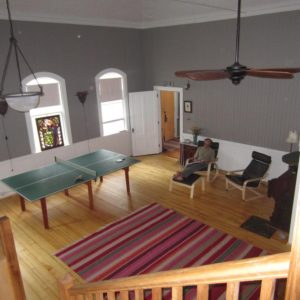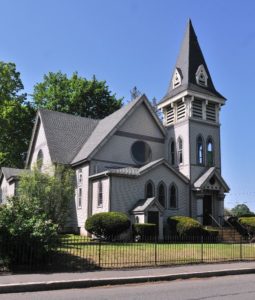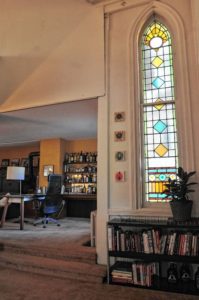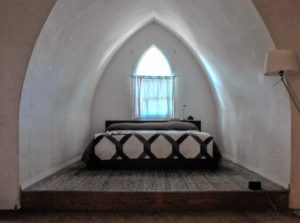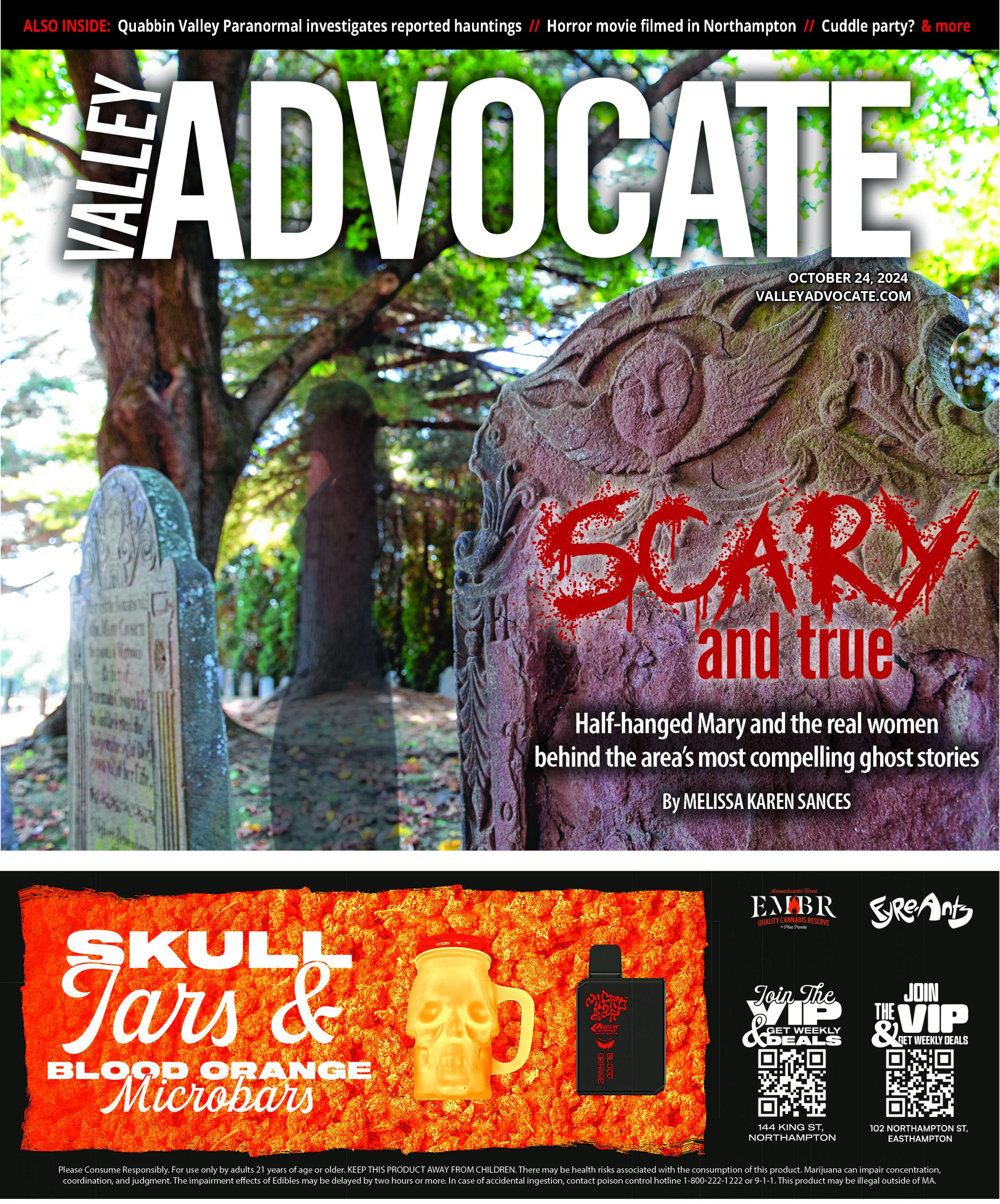Liza King, 66, and Rick Neumann, 71, of Brattleboro, are about to fulfill what has felt like their lifelong ambition. On June 1, after nearly 20 years, they will move into their church sanctuary.
“Their” church, by the way, doesn’t mean the church to which they belong, but the church that belongs to them. Liza and Rick are among a small, intrepid bunch across the region who have purchased former churches to convert to spaces to live.
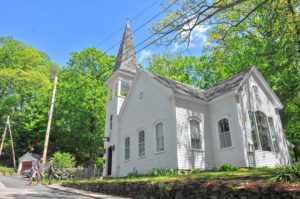
This building was a Brattleboro church for more than 100 years. After a stint as a stained glass making studio, now it is home to Liza King and Rick Neumann.
How did the church come to be for sale? It’s not actually that uncommon.
New England — at the time of the Puritans a hotbed of religious faith — has since become the most God-less region of the country. Pew Research Center (Ha ha, but they are seriously the ones who looked into this) puts the number of highly religious adults in Massachusetts, Maine, New Hampshire, and Vermont at about one-third the population. In most states, highly religious adults make up between 50 and 75 percent of the population.
That feast-to-famine pattern of religious feeling has left New England with a lot of vacant churches. Then do-it-yourself New Englanders like Liza and Rick see renovating a church to live in as an intriguing challenge. You can also count Caro and Boon Sheridan in that group. The couple likes the novelty of living in a church and bought one, pre-converted, in Holyoke.
“I was really excited about it,” says Rick, sitting at his kitchen table in the small, former side-room of the church they renovated into an apartment. “I got excited about raking the leaves outside the church. I felt really blessed to have this place. Every little thing I did was a real honor. We put a lot of love into it.”
**Click image to get to 360-degree photo**
The 2,400 square-foot church was built in 1895; Liza and Rick bought it in 1998. Its bell tower now sports a hammock, which blows in the breeze. It is painted white, and a sign hangs above the wine-colored front door that says “Swedeville,” an homage to its roots as a Swedish Congregational Church. The couple has turned a good portion of the three-quarter-acre lot surrounding the building into a flourishing garden.
Inside one of the arched front windows are more than 100 samples of stained glass arranged in a rainbow pattern. It’s a reminder about why the couple originally bought the church — as a studio for their business, Neumann Studios Stained Glass.
The room attached to that window has another use now. It is the top Airbnb listing in Brattleboro — more on that later.
Self-proclaimed introverts, Liza and Rick are warm and welcoming. They finish each other’s sentences as they talk about how they first acquired the church.
“We were pulling all the finances together, being poor artists,” says Liza. “We didn’t qualify for a mortgage.”
The church, which was just across the street from the house in which they lived, was owned at that time by the Pentecostal Church, which acquired it during the 20th century. When they put it on the market, Liza and Rick were interested, but someone else made an offer while they figured out their finances. The pair was devastated.
“Rick was like ‘I can’t live here anymore,” Liza says.
The buyer, an acquaintance, saw them in downtown Brattleboro shortly after he had made his offer, and saw how depressed they were. He told them that the church was meant for them and that he would withdraw his offer, saying it would take too much work to repair.
“That allowed us to buy it for quite a bit less,” Liza says.
“The Pentecostals got nervous about selling it at all,” Rick adds.
They paid $55,000, $20,000 down from the asking price of $75,000. Still, it was hard even to scrape together enough for their down payment.
Before the church could hand over the building, it had to be desanctified. A group with the Pentecostal church came in and performed a short ceremony which the couple did not see, Rick says.
Inside, the building needed a new furnace, water was coming down through the roof, and it was still filled with pews, which Liza and Rick had to find a way to get rid of in the pre-Craigslist days.
Within a few months, they had built a new window into the altar wall where the cross used to hang, allowing more light in. They expanded an existing hole through what is now their kitchen floor to hoist the old furnace out of the basement with a big chain.
For years, Rick and Liza used the sanctuary in which people had come to sit and pray as a place to paint and blow glass, continuing to live across the street. Much of their work involved restoring stained glass windows of other churches throughout New England.
“It didn’t take much to make it into a studio, just a big open space with equipment in there — tables and a kiln and a ventilation system,” Rick says.
It was when they were thinking of closing the studio that they set out in earnest to renovate the space as a place to live. They moved into the sanctuary for just a few weeks as they readied a smaller side space of the church as an apartment, and then moved in there.
They sold their other house in 2012 and closed the studio in 2013, finding tenants to live in the larger sanctuary space while they continued to live in the side apartment.
The compact side apartment consists of a narrow kitchen and a stairway leading up to a simple bedroom connected to the church’s bell tower. A ladder allows them access to a hatch door leading to the top of the tower, where they can survey the neighborhood.
The bedroom Rick and Liza share was once lived in by the Pentecostal preacher’s family, Rick says.
But soon, their tenants are moving out, and Rick and Liza will move to the sanctuary. What made this possible is Airbnb.
Rick and Liza’s Airbnb listing is titled “Charming studio in 19th century church.” They set up a front room of the church and put it up on the site. Beneath the tin ceiling the couple painstakingly restored, they put a bed, microwave, and homey furniture. The response they got has been tremendous.
“This place was great,” begins their most recent review from earlier this month. “The experience of the old church studio was spectacular. You could feel the old history once you stepped through the front door.”
Liza says they are generally completely full during summer months and booked more than half the time during the winter.
“We decided to do Airbnb this past August, saying ‘let’s just try it,’ and immediately got full,” Liza says. “It was amazing. I was shocked at how full it was, even in January.”
Changing the space they now live into a second Airbnb, they can afford to move into their sanctuary.
Rick and Liza consider themselves more spiritual than religious, and living in a church doesn’t bring up religious feelings in them, but they do feel the community and historical importance of the church to people’s lives in the area.
And moving into the sanctuary does bring out another feeling.
“We’re moving home,” Liza says.
No Longer Holy in Holyoke: Another Church Conversion
At the corner of Holyoke’s Lincoln and Nonotuck streets, a green and purple former Methodist and then Christian Science church houses another pair of enthusiasts for ecclesiastical conversions.
On a sunny afternoon, Caro Sheridan answers the front door of the 1875 church, which sits nestled among other residences and is across the street from a baseball field. Both she and her husband Boon work from home, she as a photographer and handbag maker, and he as a “user experience designer” (his business card says simply “I solve problems”).
While the outside features the expected trappings of a church — stained glass windows and a three-story steeple — the inside looks quite homey. Wall-to-wall carpeting covers the space where the pews used to be, now a large living room. A half-painted stairway divides the space and travels up to a second-story hallway/balcony that leads to the master bedroom featuring a large gothic arch window. A short divider wall separates the living room from where the altar once was — it’s now a TV room with a well-stocked bar, bottles neatly organized on several shelves. Another low divider wall delineates the small kitchen, which is next to a huge blackboard on which is a lovely drawing of a church.
**Click image to get to 360-degree photo**
Unlike with the Vermont couple’s church, the Sheridans — he is 46 and she is 45 — bought the church largely renovated already. They moved into the church early in 2015 from a conversion in Everett (a former convenience store), and bought it in July of that year.
“We started looking for buildings with a lot of space, and light, and were affordable,” Boon says. “Turns out the answer is churches.”
Square foot for square foot, churches proved to be the best deal the Sheridans could find with high ceilings the pair enjoyed and a space conducive to Caro’s photography work.
“It was like buying a loft with no attached neighbors,” Caro says.
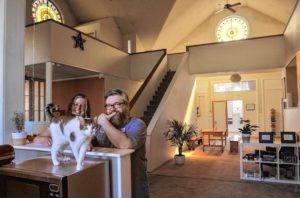
With their seven-year-old cat “Mother”. Boon and Caro Sheridan bought this 19th century Methodist Church in Holyoke about 18 months ago. Photo by Kevin Gutting.
The couple looked at churches in Portland in Maine, and Pittsfield and Barre in Massachusetts, before settling on the one in Holyoke. They paid $238,000 for the church and the quarter-acre parcel on which it resides, the latest of a string of residents in the church from 1982, when Ron Capen bought it and completed most of the renovations, including putting in the staircase and dividing walls.
The Sheridans were happy to have some of the work done already, but disappointed they couldn’t do more to preserve the original church.
“We are more stewards of the history of the church,” she says, adding that they are glad to have saved what they believe is one of the original pews from the church. It sits at the side of their living room.
Walking around the house with the Sheridans, as they point out restorations they are undertaking, it is clear that they care deeply about the history of the church. Caro shows off an 1886 photo of the church less than 10 years after it was constructed. But they are also serious about turning it into a fun space. Right now they are tackling the sprawling, low-ceiling basement, which runs the length of the building. Caro carved out a third of it for her in-home studio, but the rest lays unused, as it has for years. The couple plans to turn into a meeting space that can be used by the community and a full bar where they can also have house concerts, and one can track their progress by looking where they’ve removed the years-old grime covering the walls, floor, and old wires they suspect of being irrelevant at this point.
“It feels like every day we are hitting something with bleach and water,” Boon says. “The downstairs is feeling better and better.”
They also plan to get the stained glass windows restored. The large blue and yellow circular windows high above the living room area are majestic, but on closer inspection one can see the small panes are warped and bulging.
The challenge with all of their bigger projects is that it is difficult to find contractors willing to work on old buildings, the Sheridans say. Contractors know that what appears to be a small job in an old building can uncover more and more jobs that they might not be qualified to handle.
“We’ve had a few folks come in and take one look and say ‘I’m not the guy for this,’” Boon says.
Neither of the Sheridans considers themselves “religious,” and the church, like the Brattleboro church, was desanctified long before they owned it, meaning it is no longer a holy place. Still, the couple say they can still feel the energy of the sermons and celebrations that must have occurred there during its 107-year run.
“You think how many fingers ran along the surface of the edges,” Boon says .
Caro is hard pressed to choose a favorite spot in the house. She says she likes the house best in the morning when the sunlight comes through one of the larger stained glass windows and color shines through the main part of the house.
The Sheridans plan to live here for at least several years, but they doubt they will stay forever. They see their mission as making a binder for the next owner showing all of the renovations that were made to it and identifying each pipe and wire. They plan to live here for at least the next several years.
After all, it was just by luck — and the Pokemon Go fad that owned the summer of 2016 — that the Sheridans were able to learn about much of the church’s history.
Turns out the Sheridans’ home was a “gym” for Pokemon Go, a gaming app that requires players to walk around their communities in search of digital rewards: Pokemon. Players make their characters stronger by taking them to public spaces developers identified as gyms. Churches and libraries were often used by the developers as gyms because they are open to everyone.
No one apparently got the memo that this church was now a private residence.
The story blew up after Boon sent out a few tweets about how weird it was seeing all of these people flicking at their phones outside his kitchen window.
“Within 24 hours, I texted to Caro, um, so I have an interview with Buzzfeed and then the Guardian, and then I think I’m on the phone with the BBC right after that,” Boon says.
No harm was done; gamemaker Niantic removed the gym designation when Boon asked them to a short time later. But the story connected them with Capen, whose daughter had read about them. The original owner was happy to take the Sheridans on a tour of their own house and point out the renovations he had made and what had changed since he had owned the place.
The Sheridans and their home may not be done with their 15 minutes of fame just yet.
“We want to be on This Old House,” Boon says with a smile.
Dave Eisenstadter can be reached at deisen@valleyadvocate.com.

